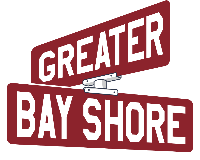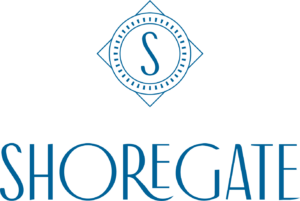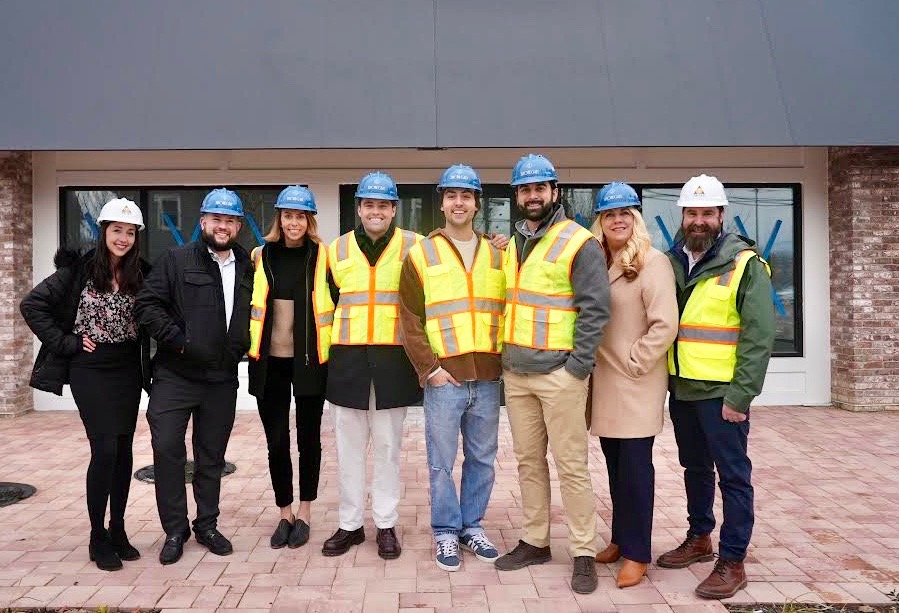
Greater Bay Shore coverage is funded in part by Shoregate, now leasing brand-new premium apartment homes in the heart of Bay Shore. Click here to schedule a tour.
 Longtime New York City journalist and filmmaker Andrew Theodorakis’ earliest exposure to journalism came in the form of hip hop music.
Longtime New York City journalist and filmmaker Andrew Theodorakis’ earliest exposure to journalism came in the form of hip hop music.
“As an 11-year-old privileged white kid from Long Island, the way I was learning about gangs in L.A. was through music,” he said. “These artists were telling stories.”
Stories no one else was telling. “And I was fascinated,” he said.
Now Theodorakis will be telling their story. More specifically, the story of hip hop on Long Island, home to legendary acts such as Public Enemy, De La Soul, EPMD, and solo artists that include LL Cool J, Busta Rhymes, Method Man, Rakim and Biz Markie.
advertisement
These are some of the biggest names there ever were in hip hop.
We caught up with Theodorakis, who lives in Stony Brook, this week in Ronkonkoma, where he was interviewing hip hop artist and producer Erick Sermon in his music studios.
A ‘HUGE HOLE’
Sermon is a Brentwood native who co-founded EMPD (Erick and Parrish Making Dollars) with childhood friend Parrish Smith in 1986. Aside from his part in EPMD’s six gold records, Sermon has produced music for Jay-Z, 50 Cent, Eminem, Ja Rule, LL Cool J, Method Man and Redman, to name a few.
To him, Long Island’s impact on hip hop and American music in general is profound.
“Without Long Island the game would have had a huge hole in it,” said Sermon. “Just EMPD, Rakim and Public Enemy. That’s three major people, and I’m not saying it because it’s me. Add in De La; that’s major. You add Keith Murray, Biz Markie; that’s major.”
“And that’s why it’s so dope that someone’s doing this documentary.”
The artists’ hometowns of Nassau and Suffolk were underemphasized by design, Theodorakis is finding. Mainly because hip hop was associated with an urban lifestyle, and Long Island didn’t fit the narrative.
“A lot of the record people didn’t want to hear you were from Long Island; it wasn’t as cool-sounding,” Theodorakis said.
So the artists would emphasize New York, not L.I.
OUR OWN BACKYARD
“You heard [about Long Island], but it wasn’t constant, like rappers usually say it,” Sermon said. “We would mention it a couple times. But people thought Rakim was really from Queens. People thought Biz was from Queens. De la Soul repped it sometimes, but it wasn’t said a lot. The rhymes were New York, New York, New York. That’s what people would understand.”
Sermon can recall the very first time hearing Long Island being mentioned on track. It was Rakim’s My Melody (1986).
“Rough enough to break New York from Long Island,” Sermon sang.
Reporting for the film is nearly complete, though Theodorakis is still hoping to sit with LL Cool J and former co-president of Columbia Records, Rick Rubin, also a Long Island native, and others.
The documentary will touch on white flight from areas such as Uniondale and the crack epidemic — and its deleterious effect on what started as nothing but fun.
Even the differing neighborhoods and the type of artists they helped mold is being explored.
“Rap music was very influential in my life, even though it wasn’t liked by the main stream,” said Theodorakis, a Ward Melville High School graduate. “And I never knew a lot of this stuff was happening in my own backyard.
“A lot of what influenced this music was within 15 miles of where I grew up.”
Top: Andrew Theodorakis at Erick Sermon’s studios in Ronkonkoma. (Credit: Ryan Honan)


























